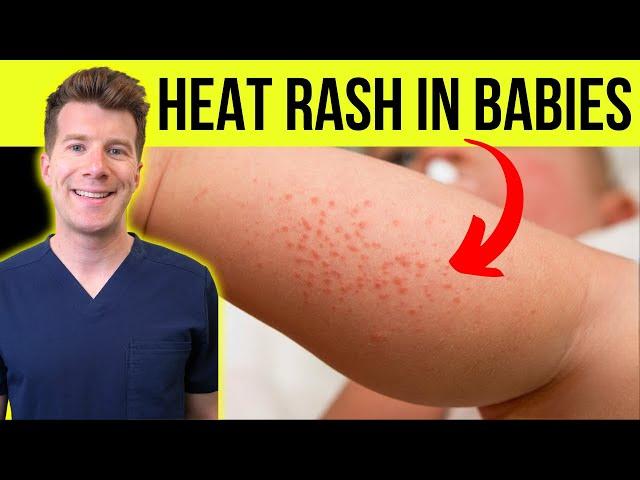
What Every Parent Should Know About Baby Heat Rash (Miliaria): Causes, Signs, Treatment, and Prevention
If you’ve ever noticed small red bumps or tiny blisters suddenly appear on your baby’s delicate skin, especially during the summer months, you’re not alone. These could be signs of heat rash, also known in medical terms as miliaria — a common skin condition that affects many infants, particularly in warm and humid climates.
While the sight of a rash on your baby can be alarming, miliaria is usually harmless and often clears up on its own with gentle care. However, understanding what causes it, how to recognize it, and how to treat it can help keep your baby comfortable and prevent future outbreaks.
What Is Heat Rash in Babies?
Heat rash occurs when a baby’s sweat glands become blocked, trapping perspiration beneath the skin. Since infants’ sweat ducts are still developing, they’re more vulnerable to this kind of irritation — especially in areas where moisture can build up, such as the neck, chest, back, armpits, and diaper area.
Because babies aren’t yet able to regulate their body temperature as efficiently as adults, they can easily overheat — particularly when dressed too warmly, swaddled tightly, or exposed to hot, humid conditions for extended periods.
Recognizing the Symptoms
Heat rash can present in several forms, depending on how deep the blocked sweat is within the skin. The most common signs include:
-
Small red bumps or pink patches
-
Tiny, fluid-filled blisters (that may look like beads of sweat)
-
Mild itching or fussiness, especially if the area becomes irritated
-
A prickly or warm sensation that causes discomfort
-
Rash typically appears on areas covered by clothing or where skin folds trap heat
In babies, discomfort may be noticeable as increased crying, restlessness, or trouble sleeping, especially in warmer weather.
How to Treat Baby Heat Rash
The good news is that heat rash is easily treatable at home in most cases. The key is to cool the skin and reduce sweating, allowing the sweat ducts to open back up.
Here are some simple yet effective steps:
-
Move your baby to a cooler environment, preferably an air-conditioned room or a shaded, well-ventilated area.
-
Dress them in loose, breathable cotton clothing to prevent further sweating.
-
Avoid applying heavy creams or oils, as these can block pores and make the rash worse.
-
Keep the skin clean and dry with gentle bathing and soft towel drying.
-
For added relief, you can use cool compresses or allow your baby some diaper-free time to help the skin breathe.
Most cases clear up within a few days without any special medication.
When to See a Doctor
While heat rash is usually mild, consult a pediatrician if:
-
The rash doesn’t improve within a few days
-
Blisters begin to ooze or show signs of infection
-
Your baby develops a fever or seems unusually irritable
-
The rash spreads rapidly or becomes more severe
In rare cases, a rash may be mistaken for other skin conditions, such as eczema or allergic reactions, so getting professional advice is always wise if you’re unsure.
Tips for Prevention
Preventing heat rash is often easier than treating it. Here are some ways to reduce your baby’s risk:
-
Avoid overdressing your baby, especially in hot weather
-
Keep the room temperature comfortable and well-ventilated
-
Limit time in direct sunlight or in hot, humid environments
-
Use lightweight bedding and swaddles
-
Check your baby regularly for signs of overheating, such as sweating or flushed cheeks
Final Thoughts
Heat rash may look worrying, but with a little care and awareness, it’s a condition you can manage easily at home. By keeping your baby cool, dry, and comfortable, you can help prevent those red bumps from ever appearing.
And remember — when in doubt, always reach out to your pediatrician or a skin specialist to ensure your baby’s skin stays happy and healthy.